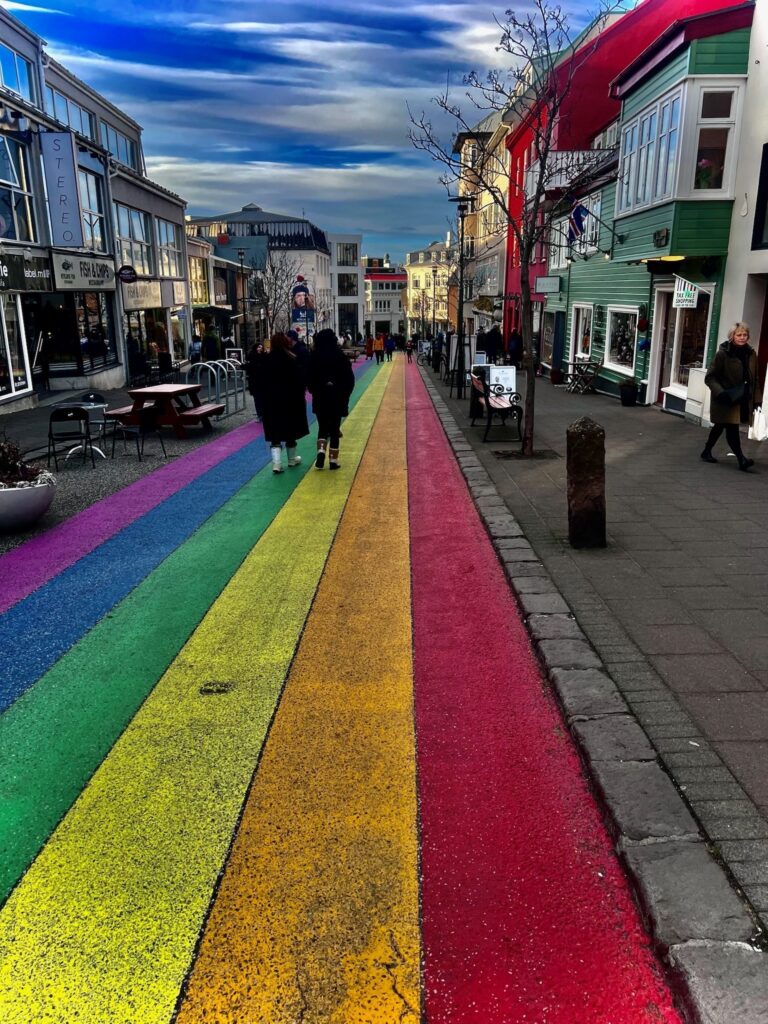note: as of this posting, the people of Iceland are still struggling in the wake of the nearly a month of volcanic eruptions…our prayers go with them as they steel themselves against Nature’s most awesome forces.
This isn’t meant to be a travel blog. We’re grateful for the real ones, for ideas and inspiration. But we know that they are always someone else’s snapshot of time and place…inimitable experiences that give you a tiny window into their impressions and lessons. A great travel blog supercharges your anticipation and imagination about your own journey to an unseen landscape, people, community. But your own experience will be just that…unique, individual, personal. We’re beginning to understand that our sense of a place is completely, inextricably tied to our sense of ourselves while we’re in it. Who and How we are leaves an indelible imprint on Where we are.
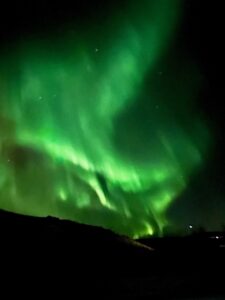
Iceland is stunning. Even in February, we were treated to the delights of every conceivable season. Jagged, angry volcanic rocks, belching fire. Remnants of ancient shifting glaciers literally moving beneath us. Lakes, forests, fields, mountains. It’s easy to think of it as the land time forgot. It might be the land where time began.
We did a 10-day stretch on Iceland’s Ring Road – it was a longer riff from a great blog Darren discovered, chronicling the details of their 8-day journey on the epic byway. Theirs is a proper travel blog — it’s loaded with great tips here: www.theglobetrottergp.com. Check out all of Leanne’s adventures there, but if you are remotely considering Iceland, we urge you to move it to the very top of your list…her trip was in September, and ours was definitely NOT, but both seasons were magical, so what are you waiting for?
Each day, we embarked on a five-ish hour drive, punctuated by one or two key sites. It gave us a lot of windscreen time to contemplate life’s big questions. We spent a lot of energy on education…
Back in Portland, we’d seen Jason Latimer’s performance called, “Impossible Science” . In this brilliant talk, the magician/physicist blew our minds, putting once intangible concepts right within our reach. The best part about Jason is he is the sort of scientist who is untroubled by the difference between What Happens and Why It Happens. He’s curious. He reminded us that our quest for knowledge is ONLY fulfilled by relentless questions – and the questions are always more important than the answers. And, that there really are no stupid questions.
It got us thinking about how we teach children in the first world. Comparing the systems we each came from. We’ll leave it to you to debate the finer points, but the “systems” we come from seem to have it exactly backwards.
Consider this: The public school system in the US has its first contact with children until the age of 5. At the age of 5, we enroll them in 13 years of dense, generic curriculum. We spend the early years trying to spot any variance from the norm, labeling it, channeling little people we barely know into categories that will create lifelong imprints,
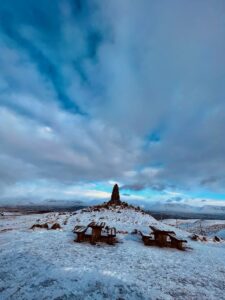
Enter kindergarten, where new influences enter our realm. New teachers and guides, new peers and contemporaries. They each have their own unique teaching and learning methods. If the average teacher is 30 years old, and there are 20 students in the class, each kindergarten is a mashup of over 130 people years of teaching and learning experiences. And, yet, we begin with a curriculum that is so insidious in its rigidity that it’s never even questioned. Reading. Writing. Arithmetic. They begin teaching their way. And they watch.
Like all spectrums, a small fraction will appear to thrive, they’ll delight us with their conformity and their ability to commit useless facts by rote to memory and pass standardized tests measuring futility. But the system failed them because it only plays to their strengths, and bored them out of their minds for a decade. They hit the Ivy’s utterly unprepared to sustain excellence. Suckers. We churn them. A small fraction will struggle mightily, be labeled “Disabled”, on the spectrum, or worse. The system fails them altogether, immediately and completely and ostracizes for their uniqueness, and intensifies the observation, babysitting, labeling. They drop out or barely get by. We create the losers. We remember the ones in both those categories. They’re the Class Valedictorian and the Most Likely to Be in the County Prison. But most kids are in neither category, simply lost, unaddressed, unattended….nameless, faceless cogs in a bureaucratic propaganda laced machine. By the middle of elementary school, we’ve been taught, tested, and measured against a common yardstick, clustering – a few thrive against the standard, a few are really failing,, and most are just lost in the faceless generic middle-of-the-crowd, swept up in the norm, trying to keep up.
The only adjustments we make to the curriculum – a standard which caters to no one – are for those edge cases. We label kids early on as having learning disabilities or academic talents – entirely based on their ability to respond to our standard.
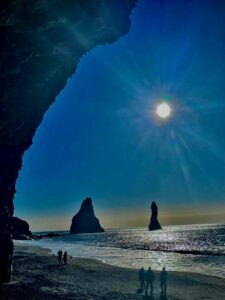
What if we got really curious, instead? What if every child in America had a full neuropsychological evaluation at the start of third grade, or whenever most of our markers are predictive of lifelong patterns, which would illustrate their unique processor skills and latencies, and we celebrated those traits and bent the curriculum to their learning style? Johnny is an immersive learner for things like historical facts and literature — he should be in the “museum” learning team – that’s where we teach through hands on immersion. Bill is a psycho with numbers, music, and chemistry — he’s in our “patterns” team; that’s where we lean into the learning style that naturally sees the connections between things. Etc, etc.
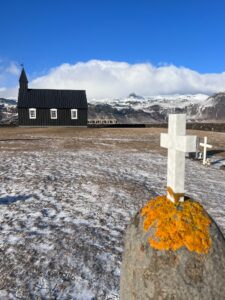
What if every child was better understood, and the system was reconfigured to channel and nurture their gifts? To recognize their authentic powers, and hone them?
The average cost of a complete nueropsych/nuerocognitive evaluation in the US ranges dramatically, but with technology, the once intensive process can be streamlined and extremely affordable and accessible. The full cost of an in-depth evaluation, with interpretation and action plan can run about $3000 at the high end, and as little as $1000 on the low side. One time. By comparison, in the US, the average cost of providing the standard curriculum in the public schools is over $15,000 per student. Per Year. New York, naturally, spends 2x the amount.
What is the opportunity cost of disengaged, discouraged children? Children who are never taught to appreciate their unique talents and gifts. Children who crave the simple recognition of the magic of the way their mind works. Children who become our next firemen, plumbers, teachers. Incalculable.
The magician-physicist, Jason Latimer is asking the questions we should be, as parents, as educators and counselors, as sherpas. The real question is, why aren’t we asking for more? Why are we satisfied with a system that is predictable only in its consistent mediocrity. Why aren’t we curious about better ways to enrich young m
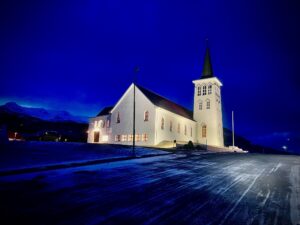
inds and inspire them to ask their generation’s big questions? Why are we so committed to the intractability of the status quo?
Our guide on Vatnajökull was a lovely young man from Amsterdam. But his words were tinged with sadness about the disappearing glaciers below us. Finality. Futility. They’ll all be gone in less than thirty years. I asked him, “What could we do something differently, each of us, right now, to make a change?” What if it isn’t too late? What if all is not lost? What if we can do better than ‘nothing’.
Perhaps it’s because the big questions are always so damned big that they seem impossibly fueled by their own inertia, the gravity of the status quo too great. But it’s asking the big questions, and finding the courage to drive the big shifts, that changes our perspective.
If we stay the course, in thirty years, will the glaciers disappear entirely? It seems likely.
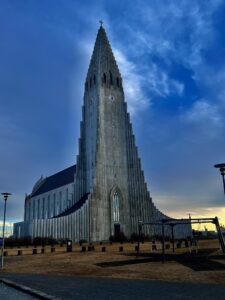
Unchecked, too, the education system will produce another generation of under-inspired discouraged children to deal with the mess we’ve left them. We’re very blessed to know many talents in the field; we spoke at length to friends and family members who have spent their lives dedicated to education. They seem to think we might be able to be better, too.
